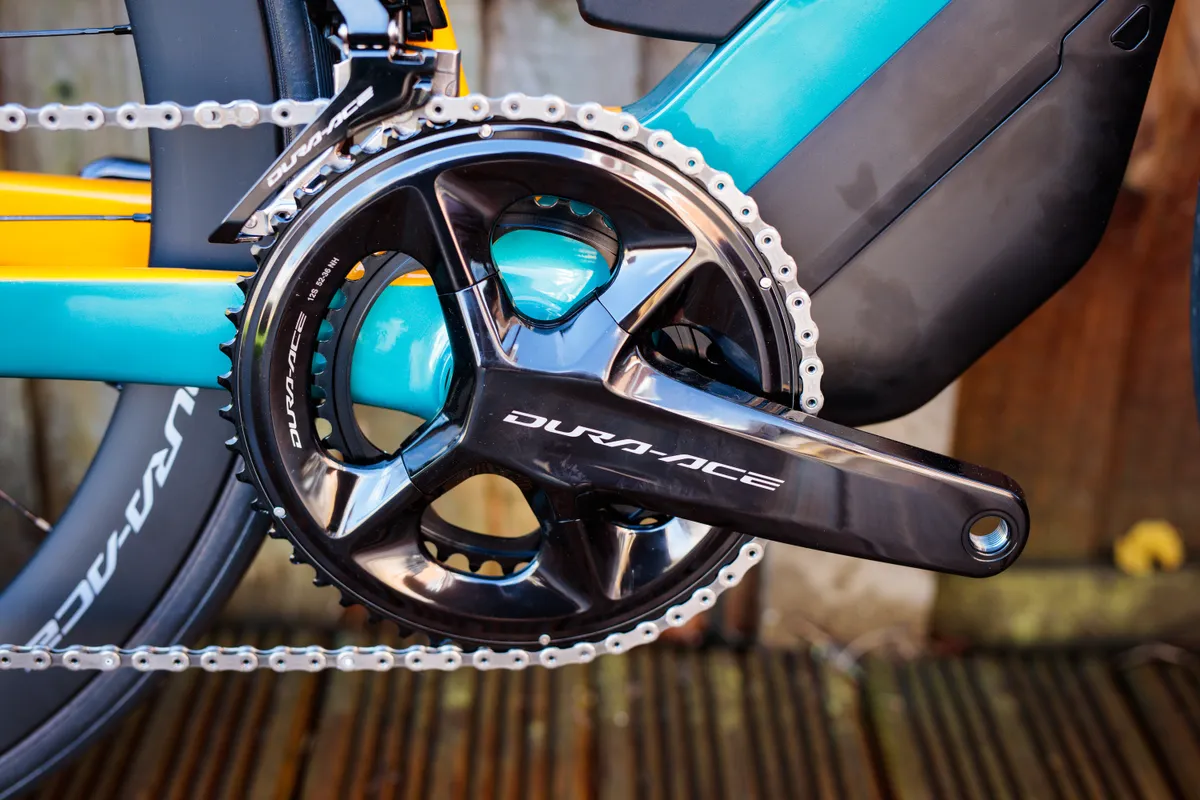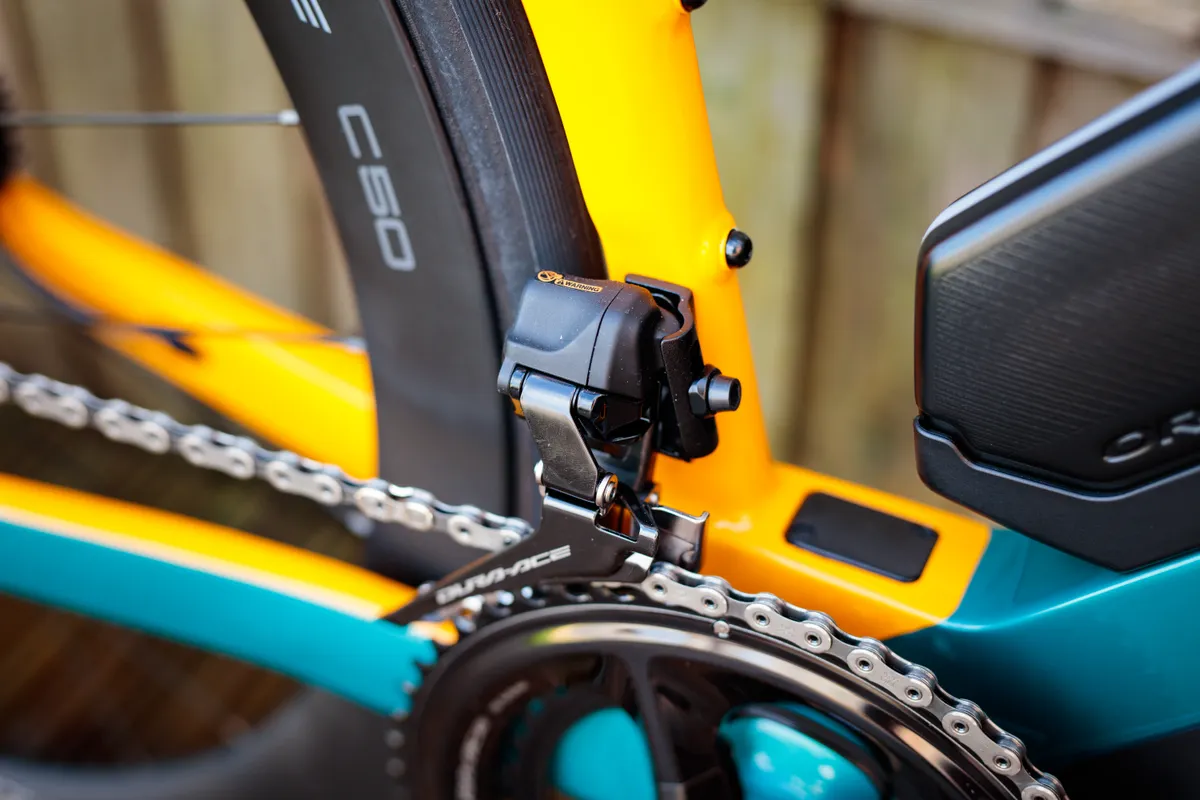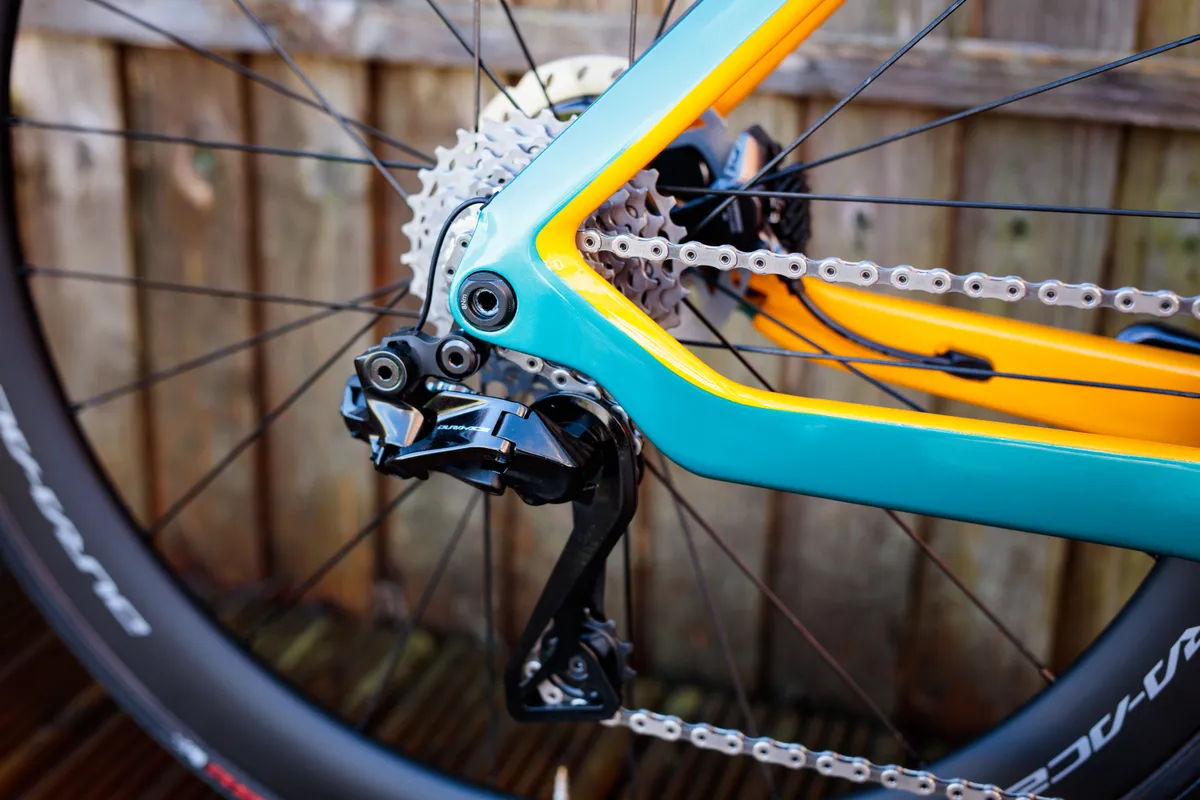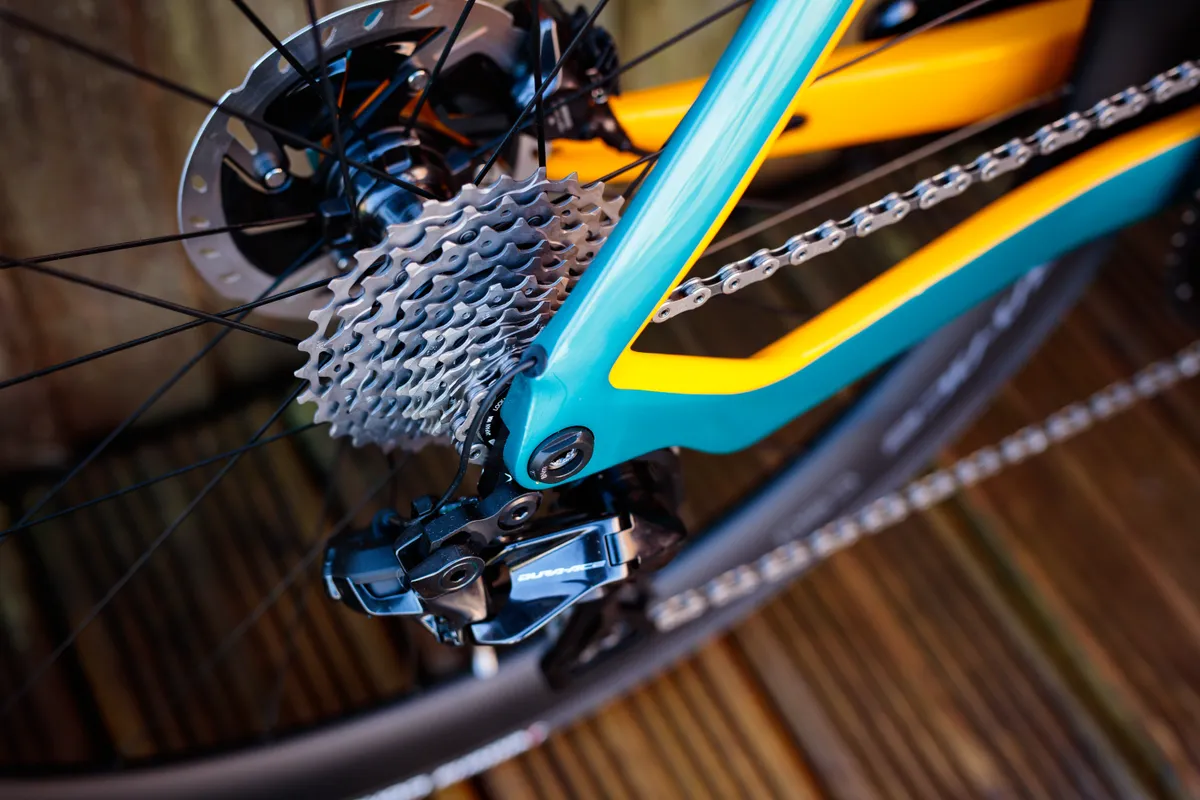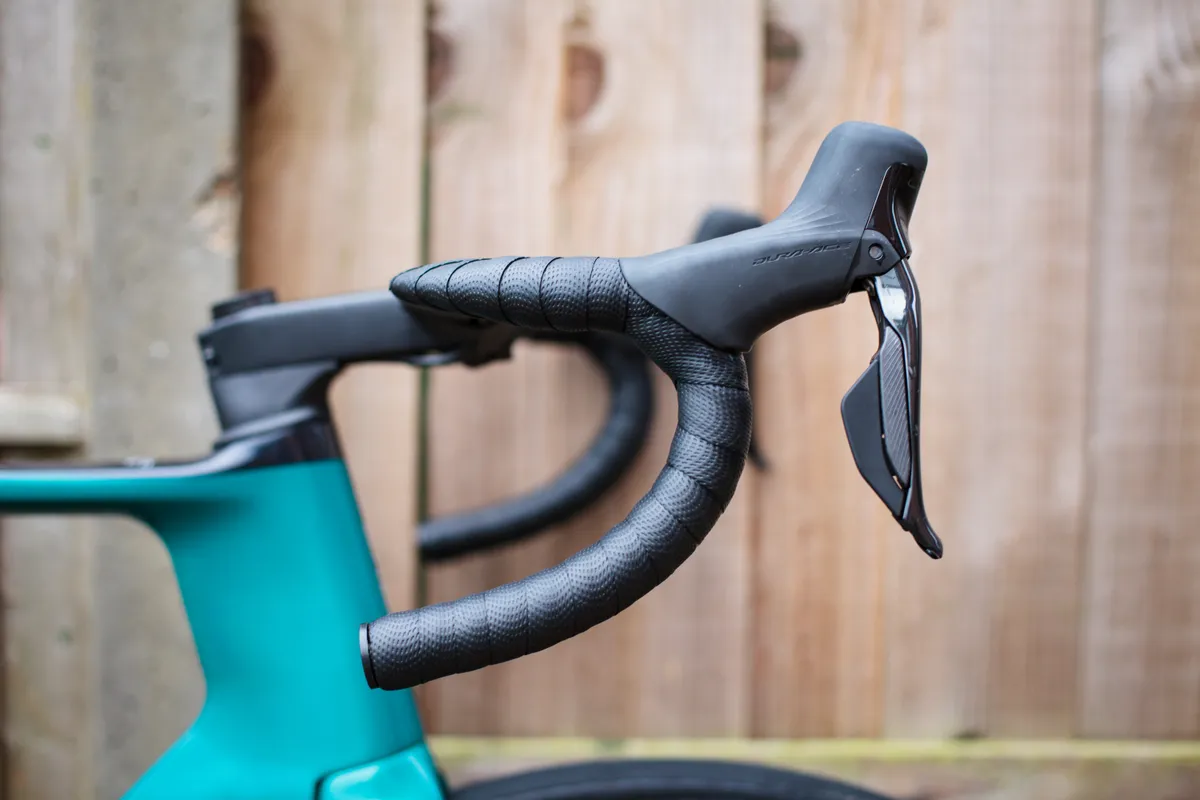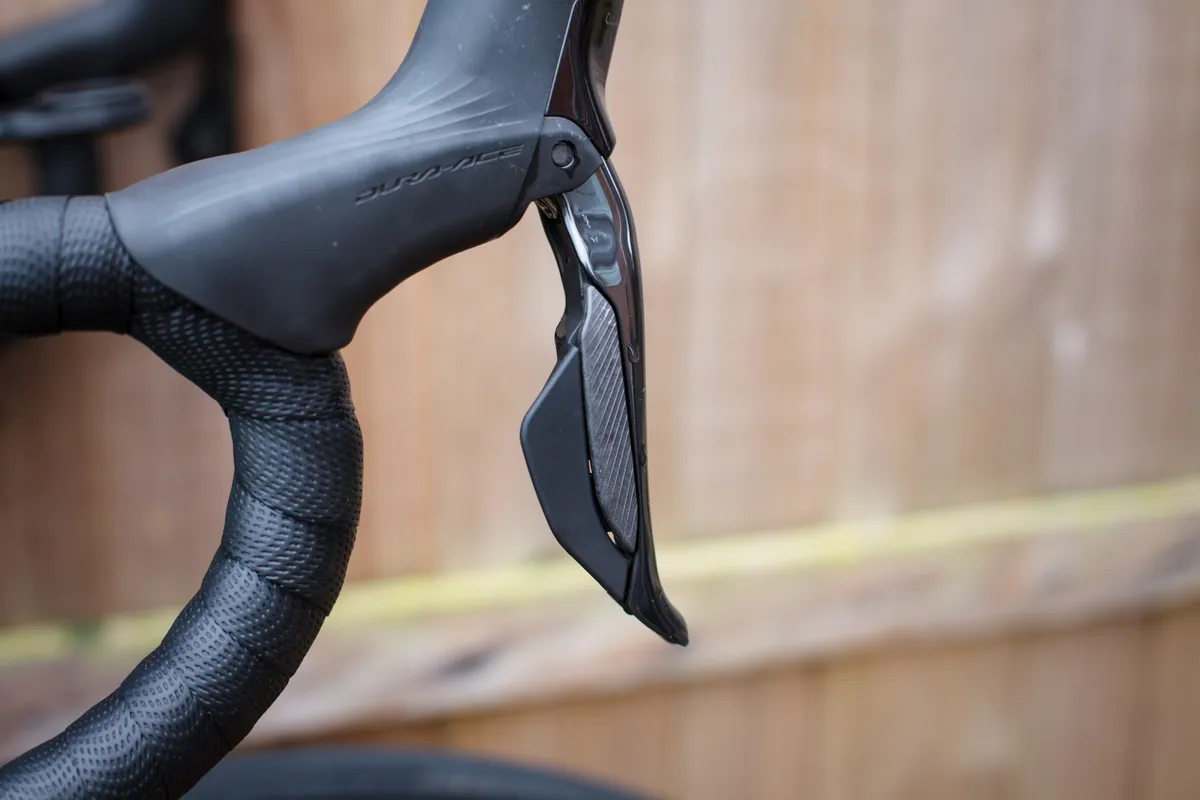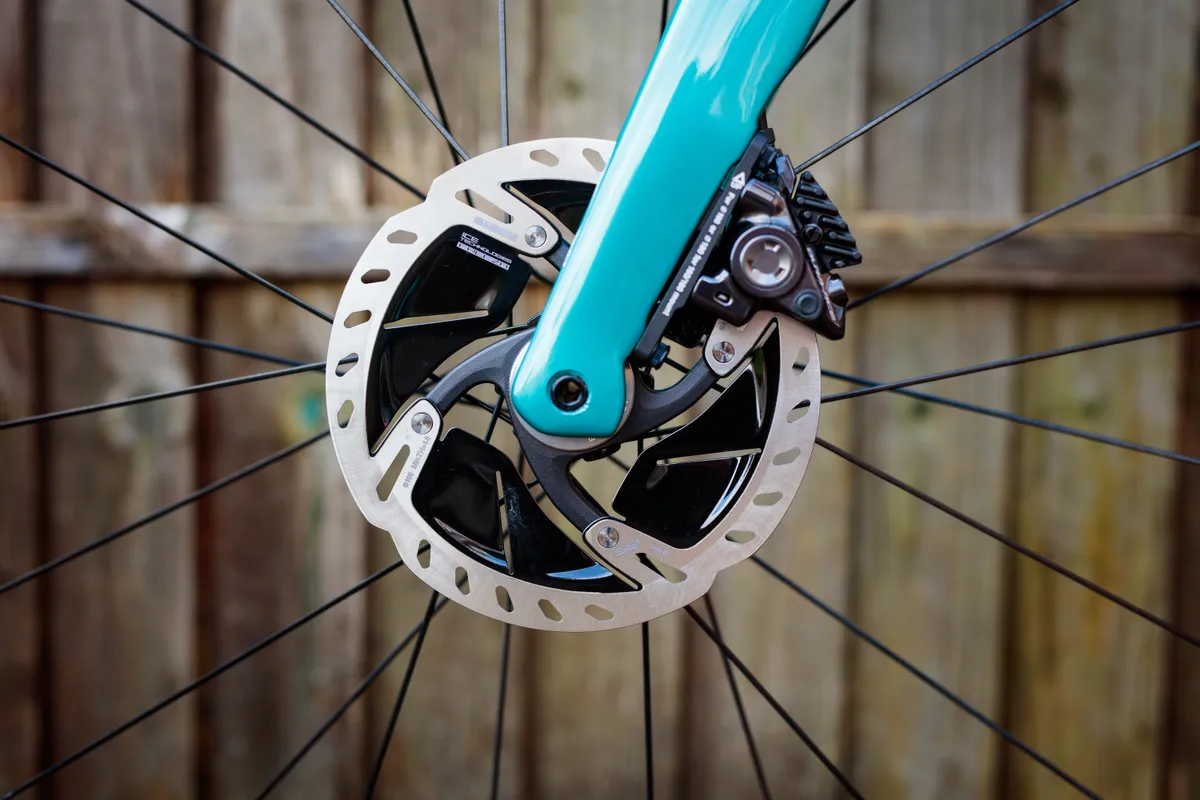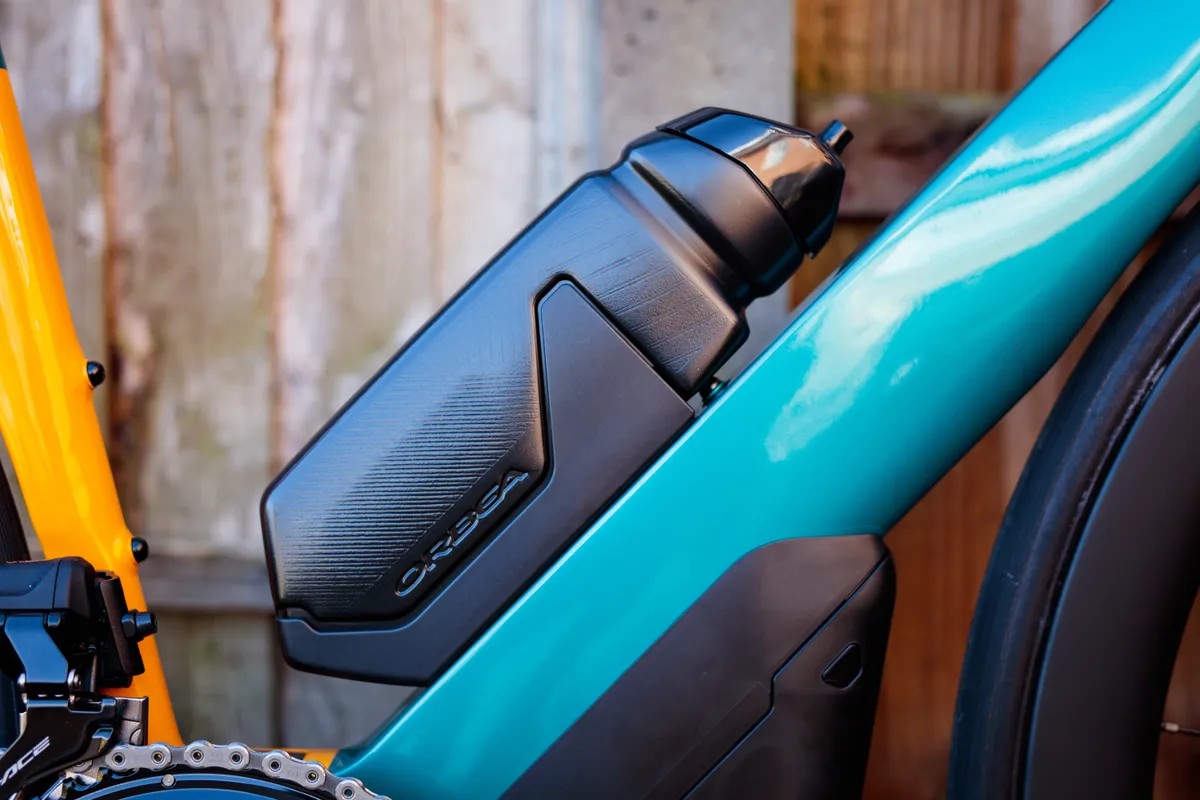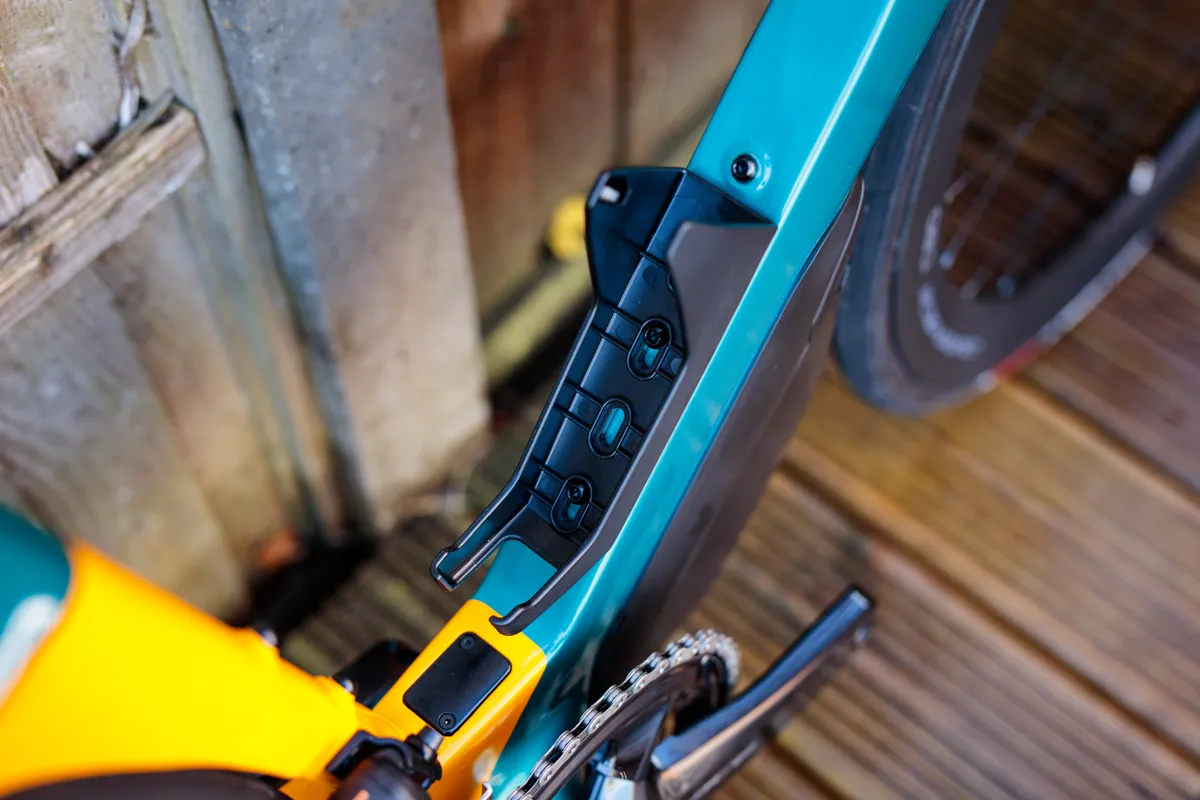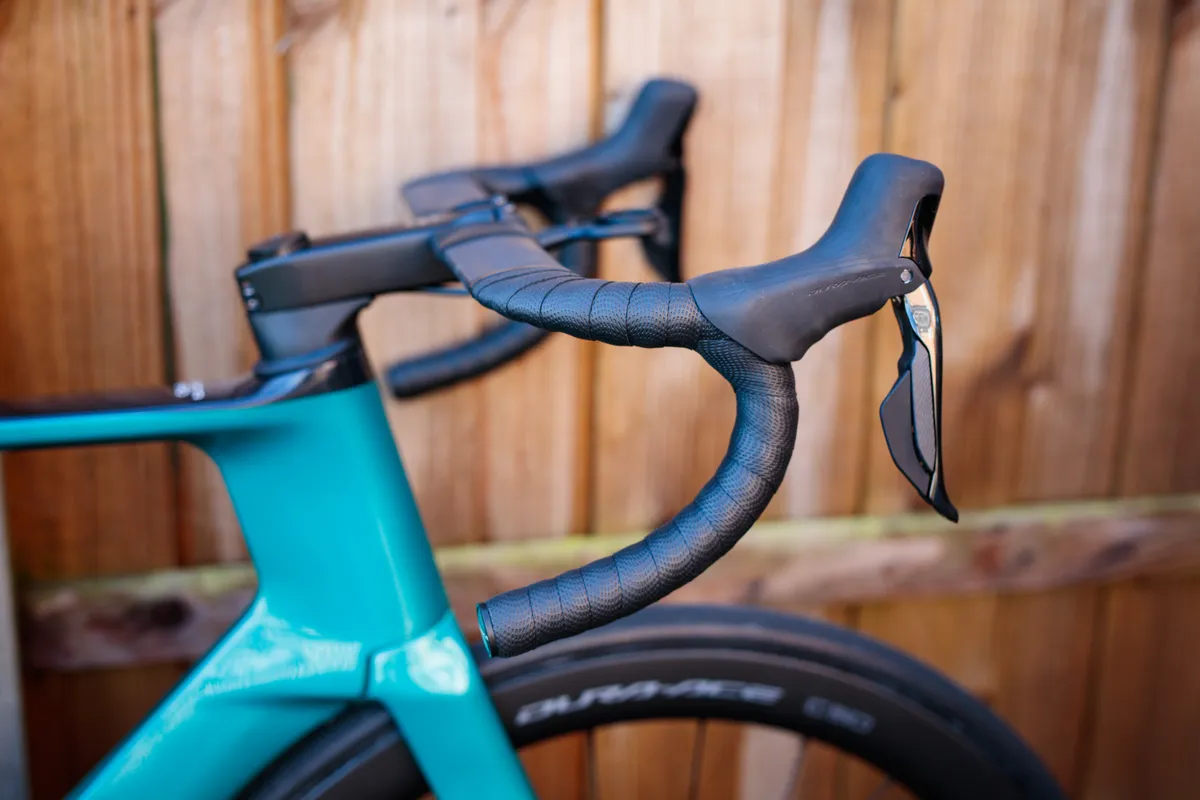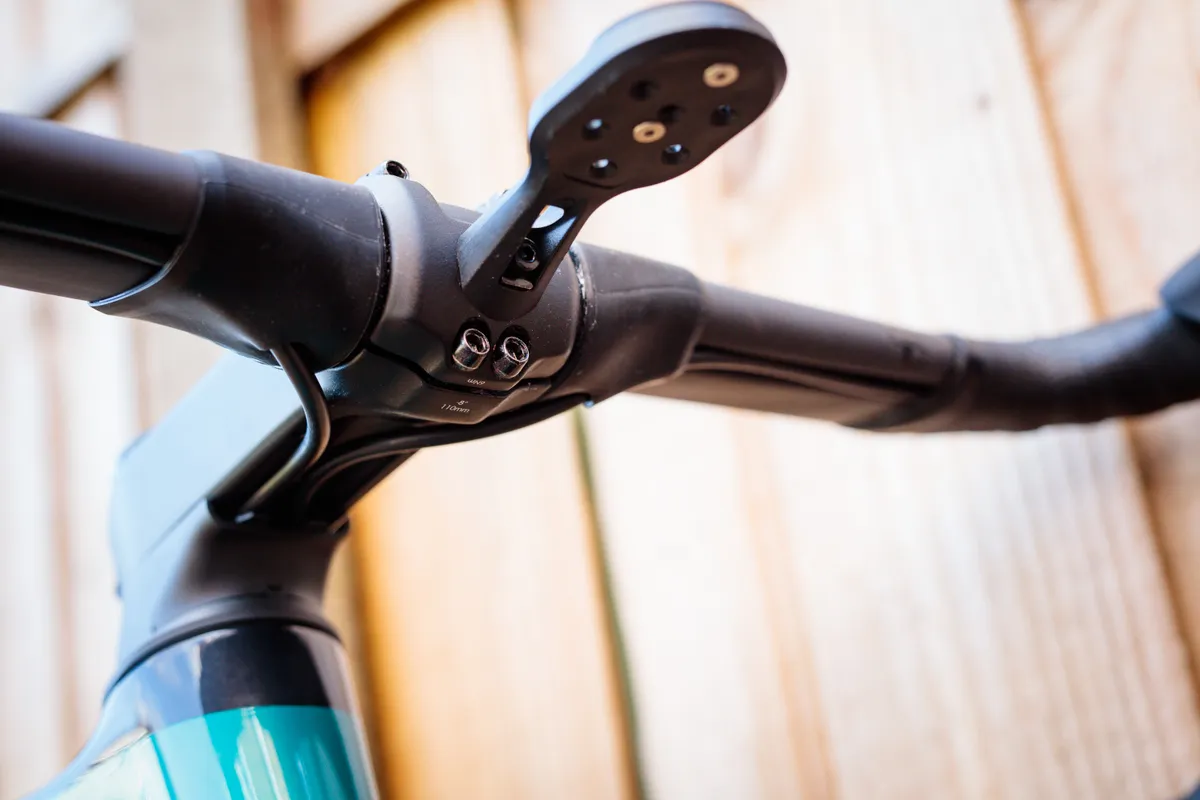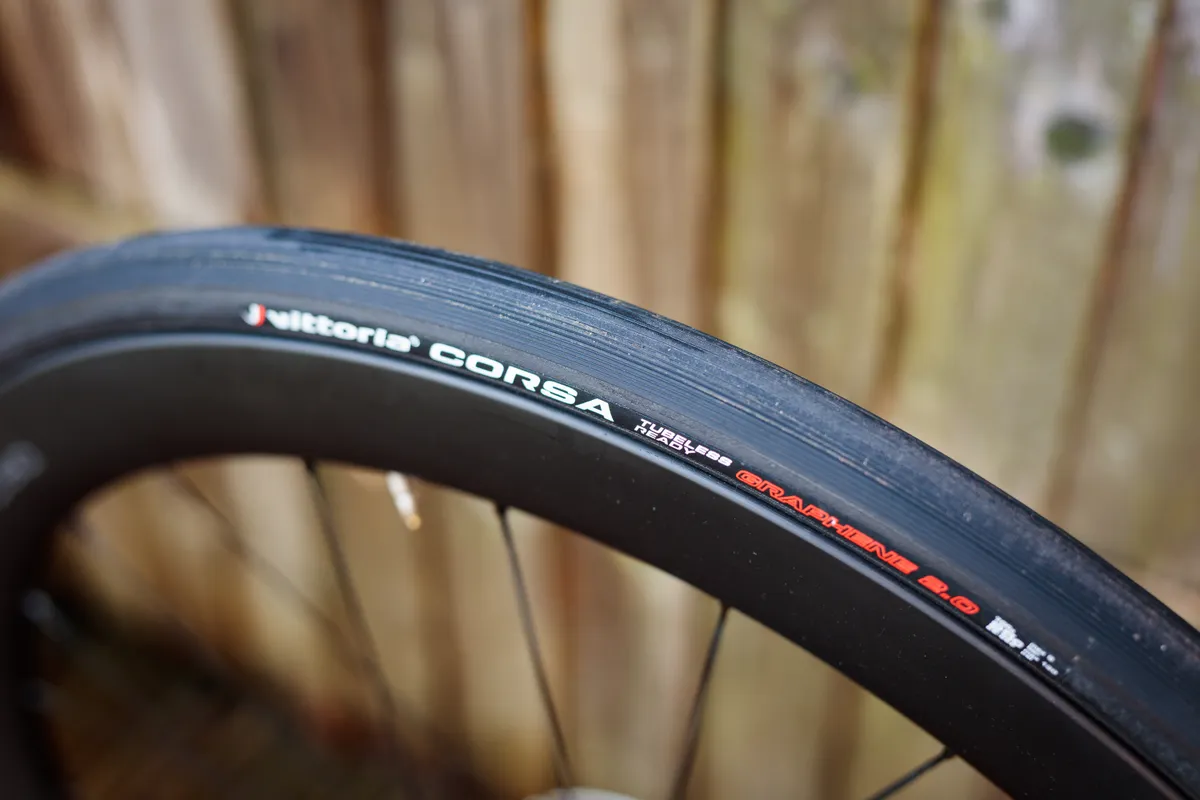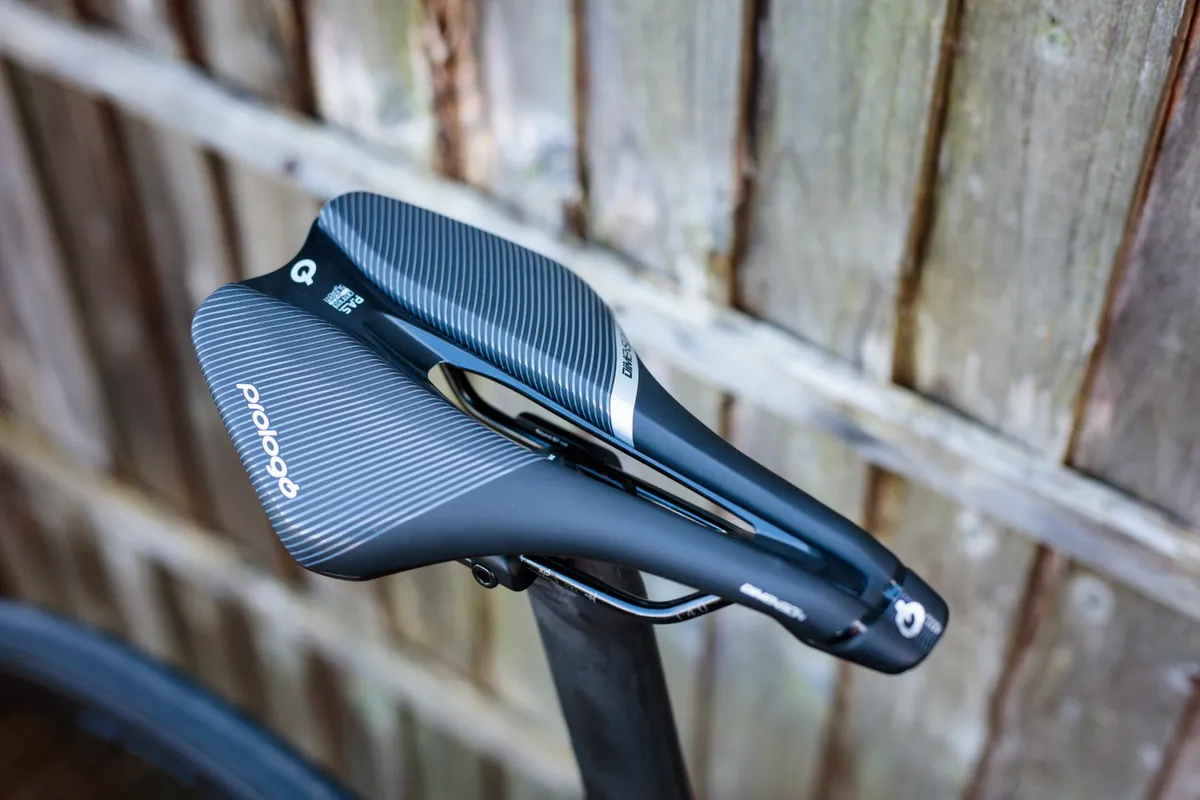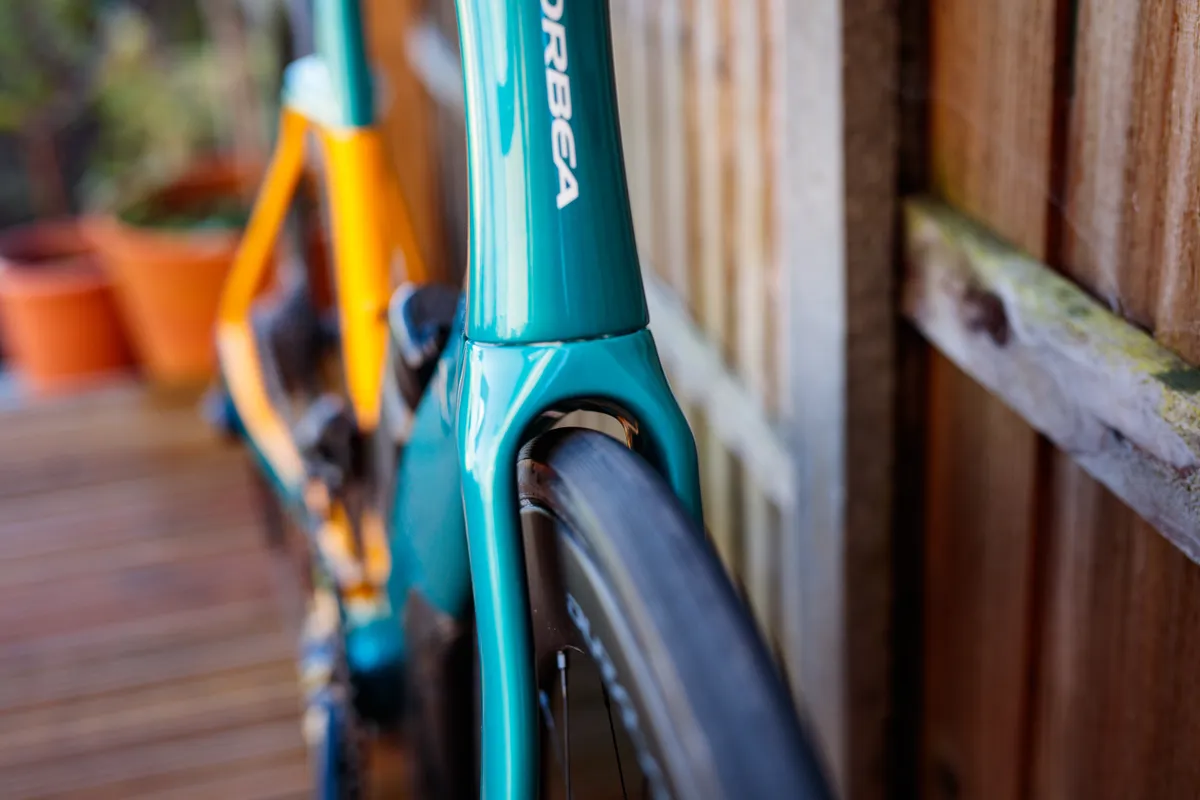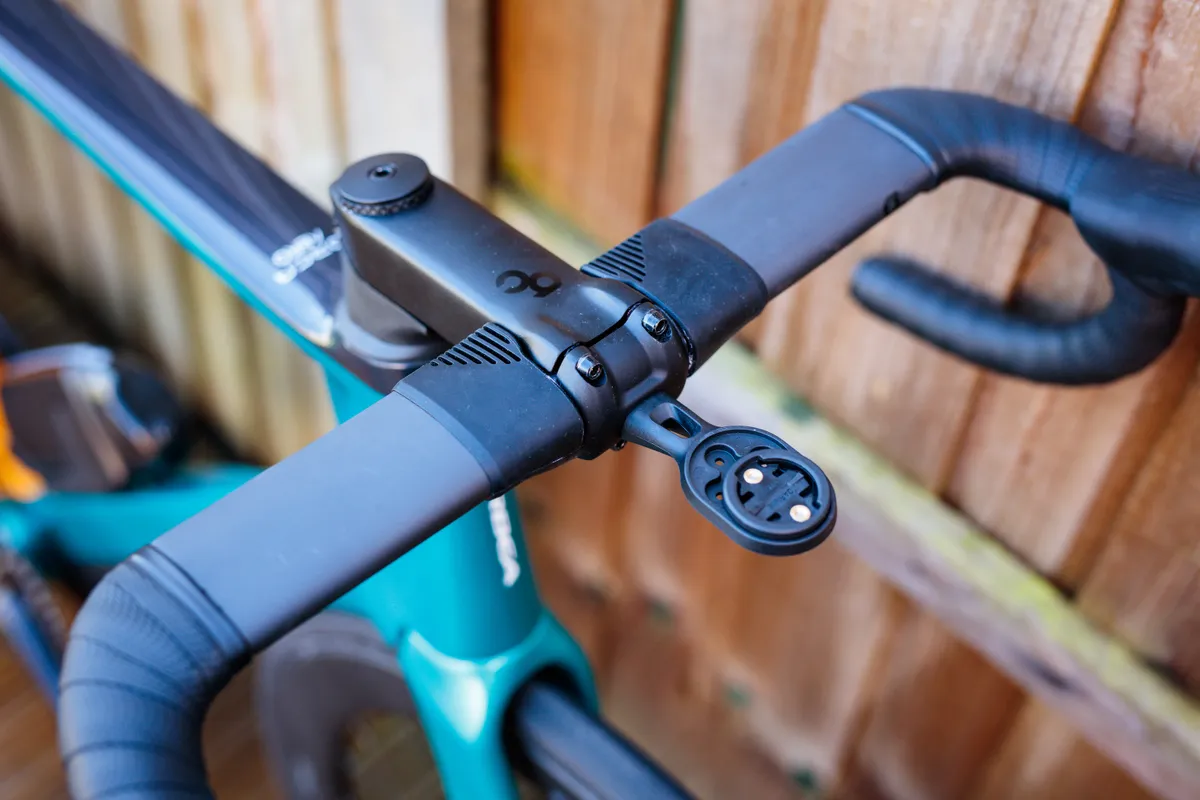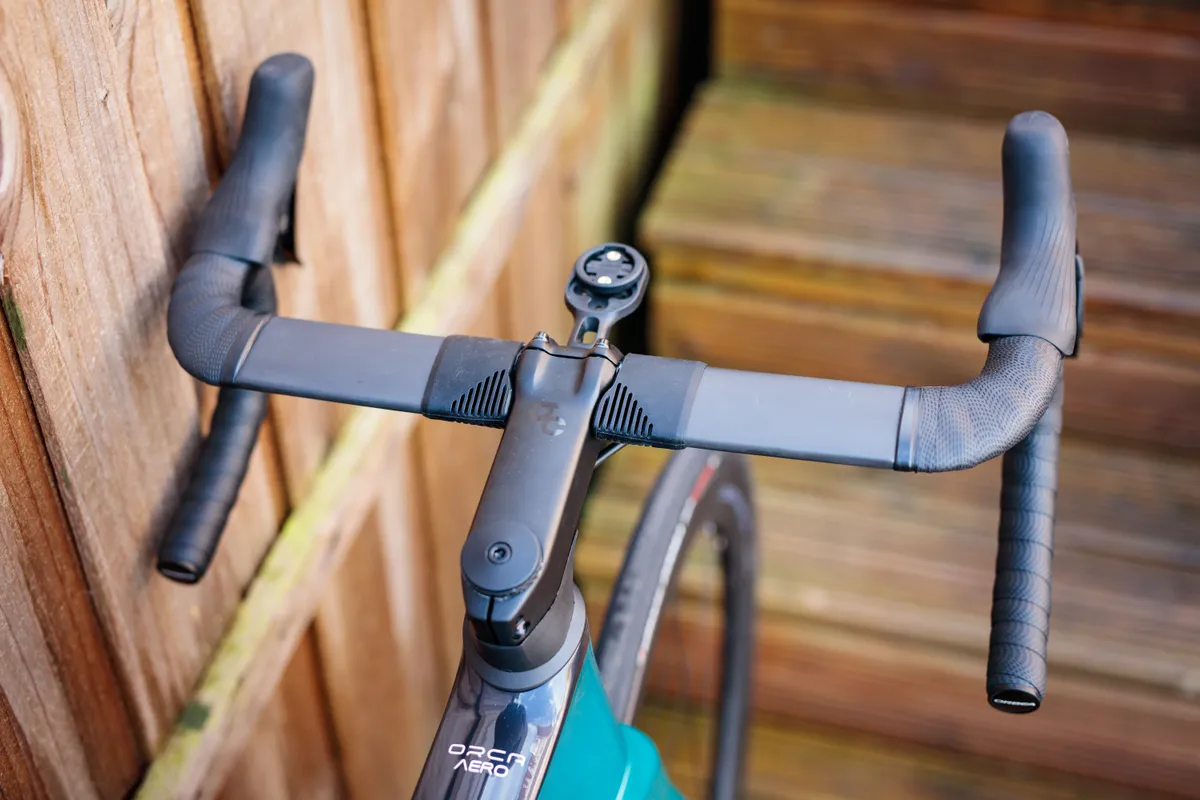The new Orbea Orca Aero M10iLTD is the latest pro-spec aero race bike from the Basque brand.
Obviously inspired by the Orbea Ordu time trial/triathlon bike, the new model is claimed to save a hefty 15 watts of aerodynamic drag versus the outgoing Orca Aero at 40kph.
While I didn’t have an opportunity to take both bikes to a wind tunnel or velodrome to confirm (or refute) that specific claim, I can say confidently the latest Orca Aero feels every bit as fast as the best aero road bikes currently available.
Arguably more important for mere mortals outside of the pro peloton, is that speed doesn’t come at the expense of ergonomics or adjustability.
A best of the best build
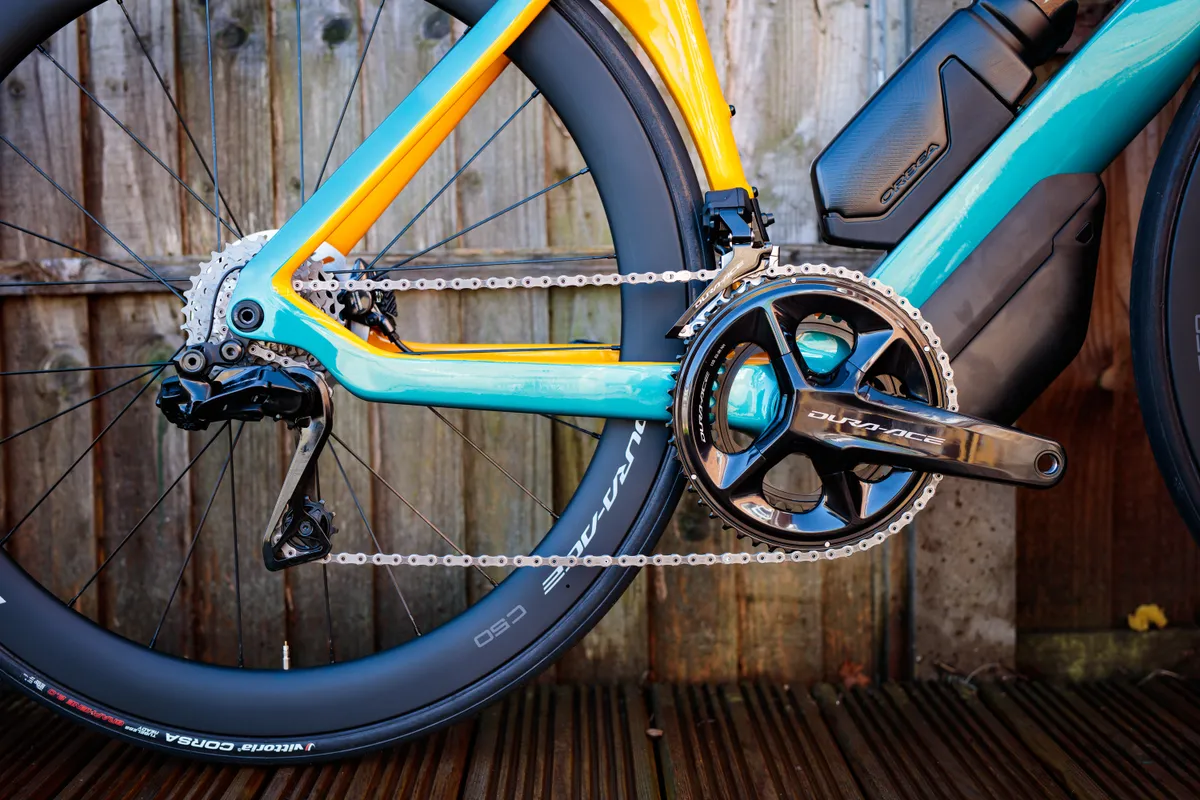
My test bike is, per cycling industry Illuminati requirements, the top-spec model in the new Orca Aero range.
As such, it has the brand new Shimano Dura-Ace Di2 R9200 groupset, plus the new Shimano R9270 C50TL wheelset and a set of 50mm deep, tubeless-ready carbon wheels.
The wheels are shod with 700x25c Vittoria Corsa TLR G2.0 tubeless-ready tyres (though my test bike came set up with inner tubes), and the build is finished with a Prologo Dimension T4.0 saddle, plus an array of elegant carbon and aluminium finishing kit made by Orbea.
All things considered, there’s practically nothing I’d want to swap out for performance reasons.
The new Dura-Ace groupset functions flawlessly, and I’ll echo the impressions of my (former) colleague Matthew Loveridge by saying the front shifting is – even by the already lofty standards of Shimano front shifting – phenomenal.
It’s difficult not to be impressed by the speed and accuracy of this groupset, and I also appreciated the updated shifter-hood ergonomics.
They’ve grown a little in height and size versus the previous version, and as someone who often likes to hold the top of the hoods and hook a single finger under the brake lever, I appreciated the extra girth available.
Braking is also unsurprisingly fantastic, with heaps of power available. Things still got noisy in the wet or after dragging the brakes on a long descent, but given my test bike was fitted with the outgoing SM-RT900 rotors, it's possible the new(ish) RT-M900 rotors may perform better in that regard.
Aero bottle and storage box
The build also includes two extra aero-focused parts borrowed from the Ordu TT/triathlon bike; an aero bottle cage and bottle, and an aero storage box underneath the down tube.
Both are entirely optional, and only the aero bottle is UCI-legal, but considering how few people actually take part in UCI-sanctioned events, that’s probably a moot point anyway.
I love the idea behind both parts. It’s great to see a brand thinking practically and looking at optimising the way we carry things on the bike such as water and spares.
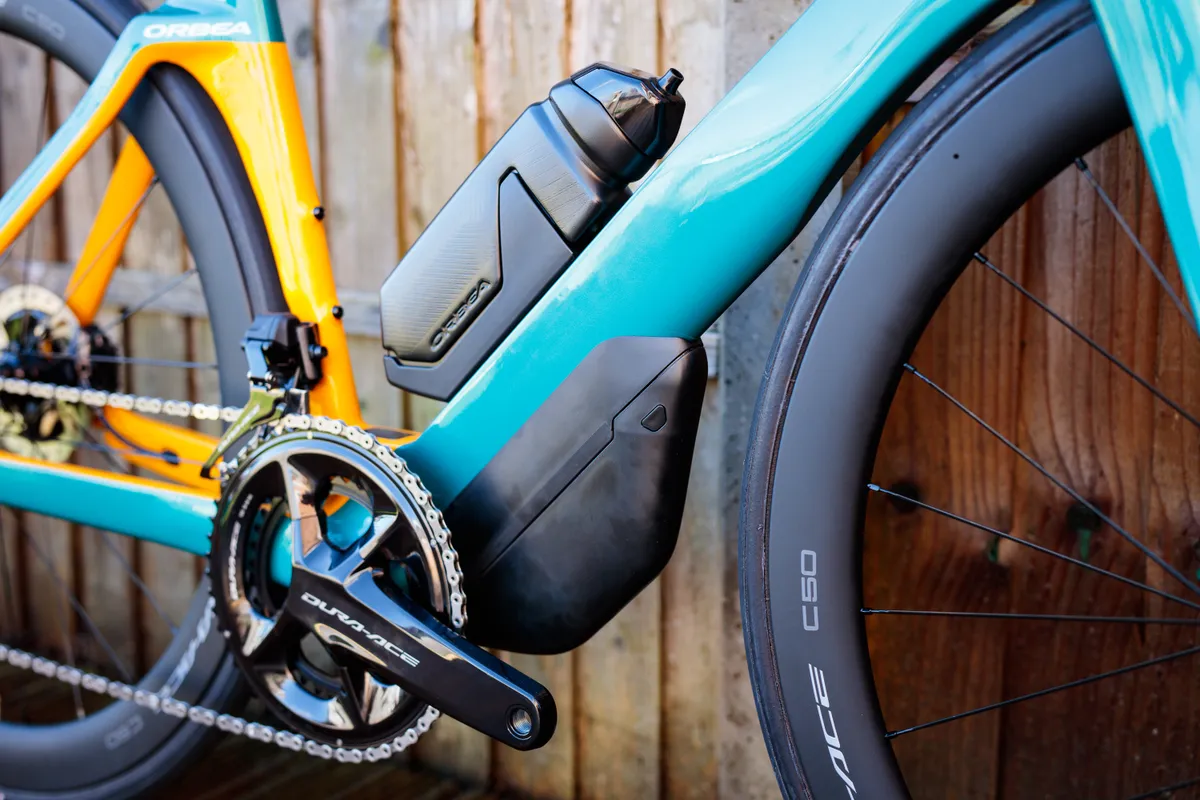
The aero storage box, for example, eliminates the need to use a saddle bag or to carry spares in your jersey pockets. According to Orbea, it makes the bike a little more slippery too – it essentially acts as a fairing, which is why it’s not UCI-legal – with no discernible downsides (assuming you don’t mind how it looks).
I was less enamoured with the aero bottle. Though it would be ideal for a short time trial or triathlon, for general road riding or racing it’s simply not as easy to use as standard round bottles, which is a deal-breaker for bunch riding. It only has a 500ml capacity too, despite taking up a fair chunk of real estate on the down tube.
After one ride, then, I took it off and mounted two standard cages on the Orca Aero.
There wasn’t a noticeable performance detriment, but the edges of a standard, round bottle clearly protrude beyond the edge of the down tube, so there’s likely a small aero trade-off for this.
I’m splitting hairs, but I think the BMC Timemachine R01’s solution of having aero bottle cages and a down tube design that manages the airflow around standard bottles is a better one for a road bike where, more often than not, you’ll probably be carrying two round bottles.
The ride
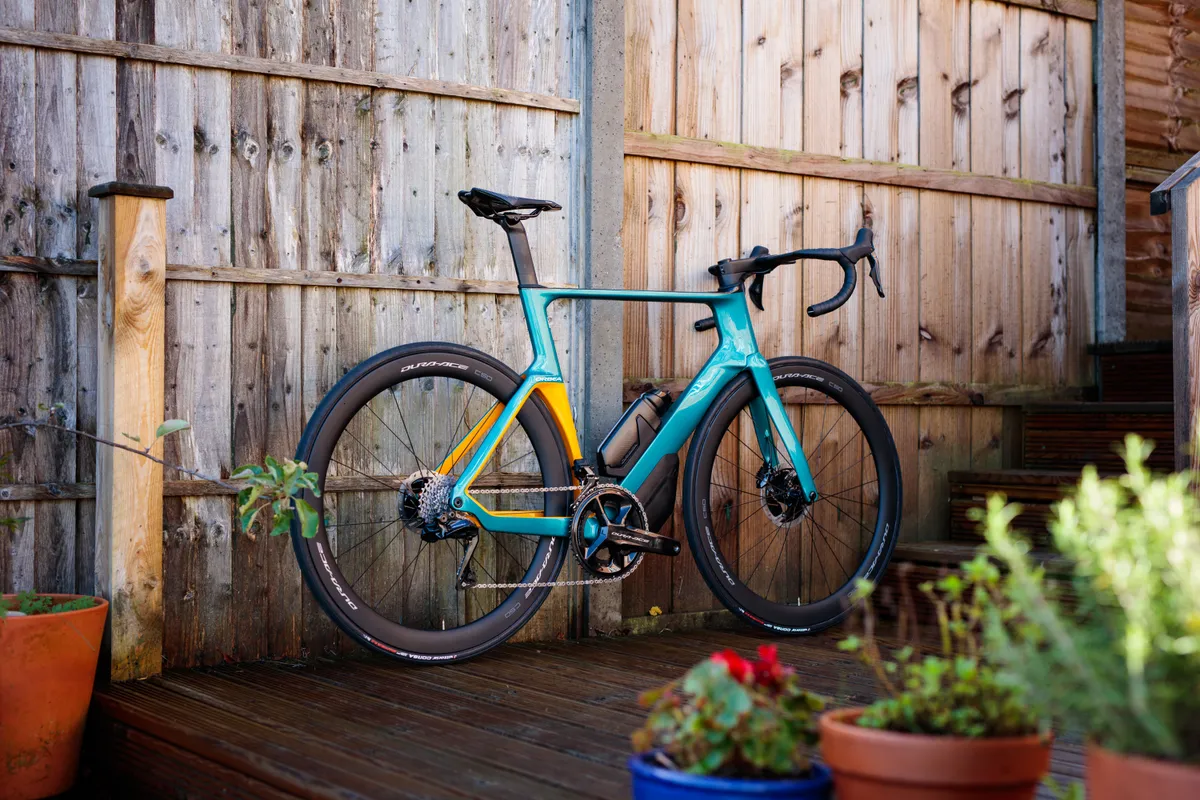
Out on the road, the Orbea Orca feels every bit the cutting-edge aero road bike – that is, it’s very fast.
Like other pure aero road bikes, such as the Cannondale SystemSix, Felt AR or Vitus ZX-1 EVO CRS, it has that magical ability to sail along on flat and rolling roads with noticeably less effort.
Subjectively, it doesn’t quite feel as rapid as the SystemSix, but that’s one of the fastest road bikes I’ve ever ridden, so I really am nitpicking.
I’d be tempted to attribute this to the slightly shallower and narrower wheelset the Orbea has (the SystemSix comes with Cannondale’s progressive KNØT 64 wheelset, which has 64mm deep and 32mm wide rims).
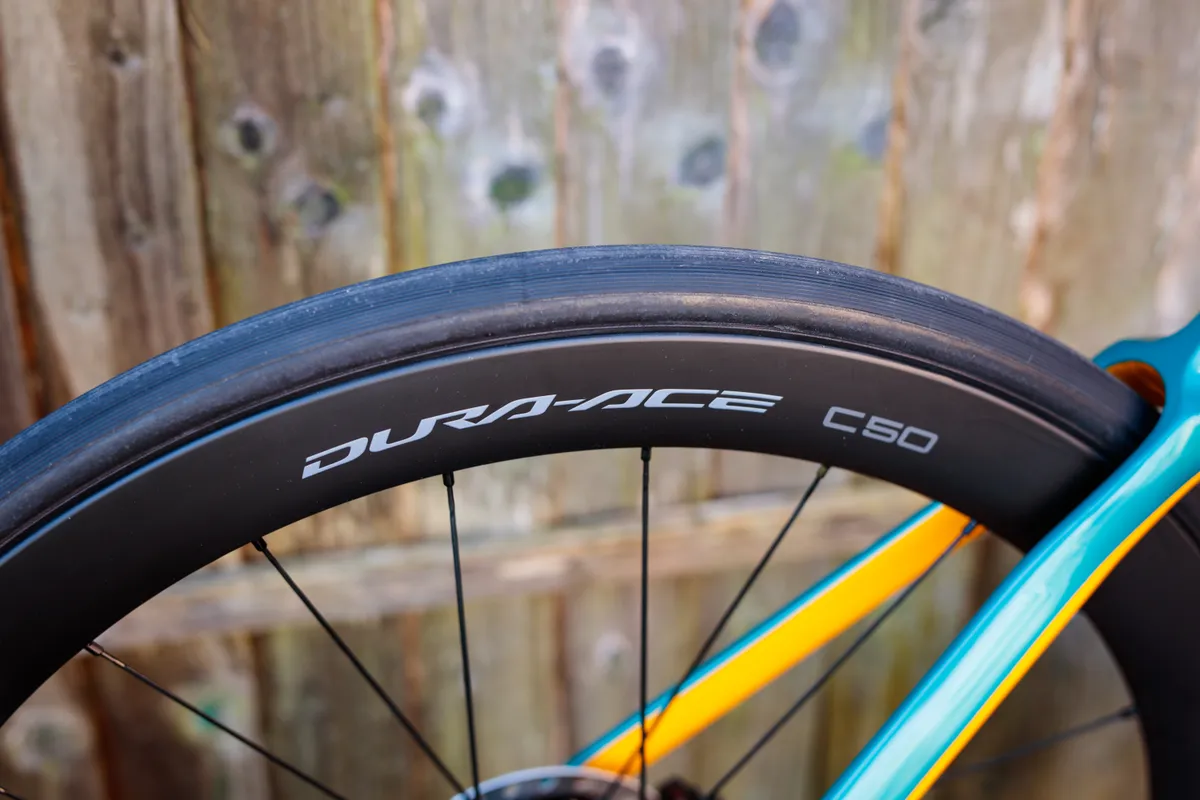
It could also just be that I've tested the two bikes under different conditions, and those conditions haven't favoured the Orbea. The margins are very fine.
Either way, the Orca Aero doesn't disappoint for flat-out speed.
This is the second Orbea I’ve tested this year, and like the first (an Orbea Orca OMR M20i Team), the new Orca Aero is a bike that handles very confidently.
The geometry is similar to that of the Cannondale SystemSix, and like that bike it feels nimble, racy and sharp. It’s exciting to ride without ever tipping over into feeling twitchy or unruly.
I didn’t get on perfectly with the shape of the handlebar. It’s an elegant piece of carbon kit, and I like the way the hydraulic cables route underneath, rather than through, the bar, in a small channel.
However, the rear edges of the heavily aero-profiled tops kept hitting my bony wrists when sprinting out of the saddle in the drops, while still covering the brake levers, which was painful and annoying.
The aero section could taper down towards the drops a bit earlier, as it does on the Felt AR’s Devox carbon aero handlebar, to improve wrist clearance.
Fortunately, if you don’t get on with the shape of the handlebar, the Orca Aero uses a standard round, 31.8mm stem clamp, so you’re not bound to it for life. You could swap in your preferred handlebar of choice without any trouble.
Overall comfort levels were otherwise very impressive, though. The supple, 700x25c Vittoria Corsa TLR tyres spread out to just under 28mm wide (at 70 psi / 4.8 bar) on the Shimano C50TL wheels, and the bike never felt overly harsh, even on the poor-quality roads we have here in the South West of England.
Some of that can perhaps be attributed to a smart carbon layup and dropped seat stays, but tyre volume and a great saddle doubtless make a great difference in this area too.
If you need even more comfort, the Orca Aero officially has space for tyres up to 30mm wide.
Counting grams
One area in which the Orca Aero doesn’t impress is on the scales.
For those who are counting grams, my size 57cm test bike, equipped with its aero water bottle and storage box, weighs 8.3kg, according to my scales. With pedals and a bike computer, you’re looking at a bike that’s over 8.5kg on the road.
That 8.3kg is 700g more than the 7.6kg weight Orbea claimed in its press materials for this model.
Given the size of this disparity, I had BikeRadar’s friendly mechanic and product tester Will Poole weigh it using his scales too, to double-check mine weren’t wrong. His scales said 8.25kg – a 0.6 per cent difference, and well within a reasonable margin of error.
When I put this to Orbea, it said the 7.6kg figure was for a size 53cm bike without the aero bottle or storage box, and with one of the lightweight, raw carbon / clear coat paintjobs. It also confirmed it had weighed my test bike at 8.24kg before it shipped to me.
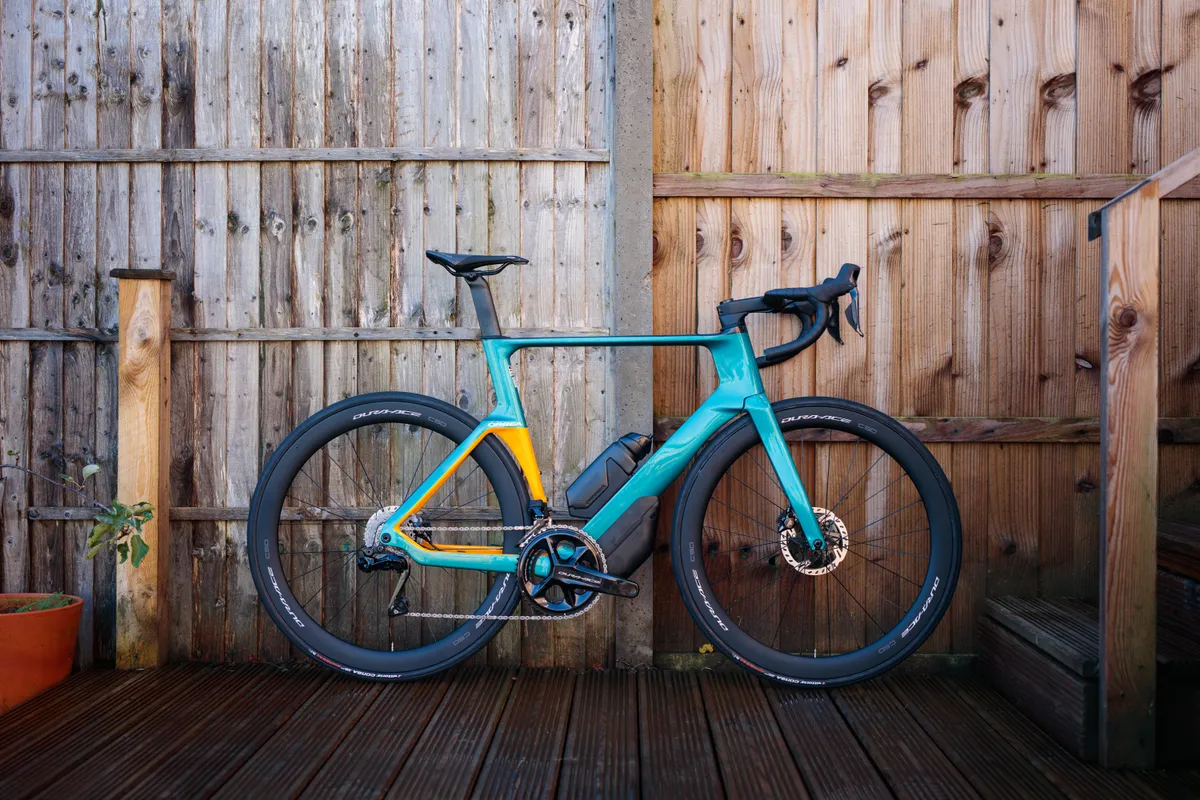
Compared to the competition, though, that’s still around 350g heavier than the size 58cm Cannondale SystemSix I tested earlier this year, which, as already mentioned, has deeper, wider wheels.
Given the size medium Canyon Aeroad CFR I tested last year weighed almost a full kilo less than this, I’d expect an equivalent version to still weigh a decent chunk less too.
I’d be lying if I told you I could feel the difference while riding, though.
You could shed some weight by converting to a tubeless setup (all you’d need is tubeless valves and some tubeless sealant), which would decrease rolling resistance too, but this is never going to be a dedicated hill climb bike.
As I’ve said before, whether any of this really matters much on a full-fat aero bike is debatable. Personally, I don’t think it does, but your mileage may vary.
Whatever you want
One of my biggest gripes with aero road bikes is that the component sizes don’t always chime with the bike’s stated intentions.
Too often (especially on a larger-sized bike), you’ll get a wide handlebar and long cranks – neither of which is particularly conducive to an aerodynamically optimised bike fit – with no option to change them.
Fortunately, Orbea offers extensive customisation options through its MyO programme, which solves this issue in one fell swoop.
For example, my test bike came equipped with a 42cm wide handlebar and 172.5mm cranks, but were I parting with my own cash I could opt for a narrower, 36cm, 38cm or 40cm wide handlebar and different-length cranks.
For the record, I’d choose a 55cm frame, with a 120mm stem, a 36cm handlebar and 170mm cranks.
I’d definitely want a custom paintjob as well, perhaps in Bristol South CC or BikeRadar kit colours.
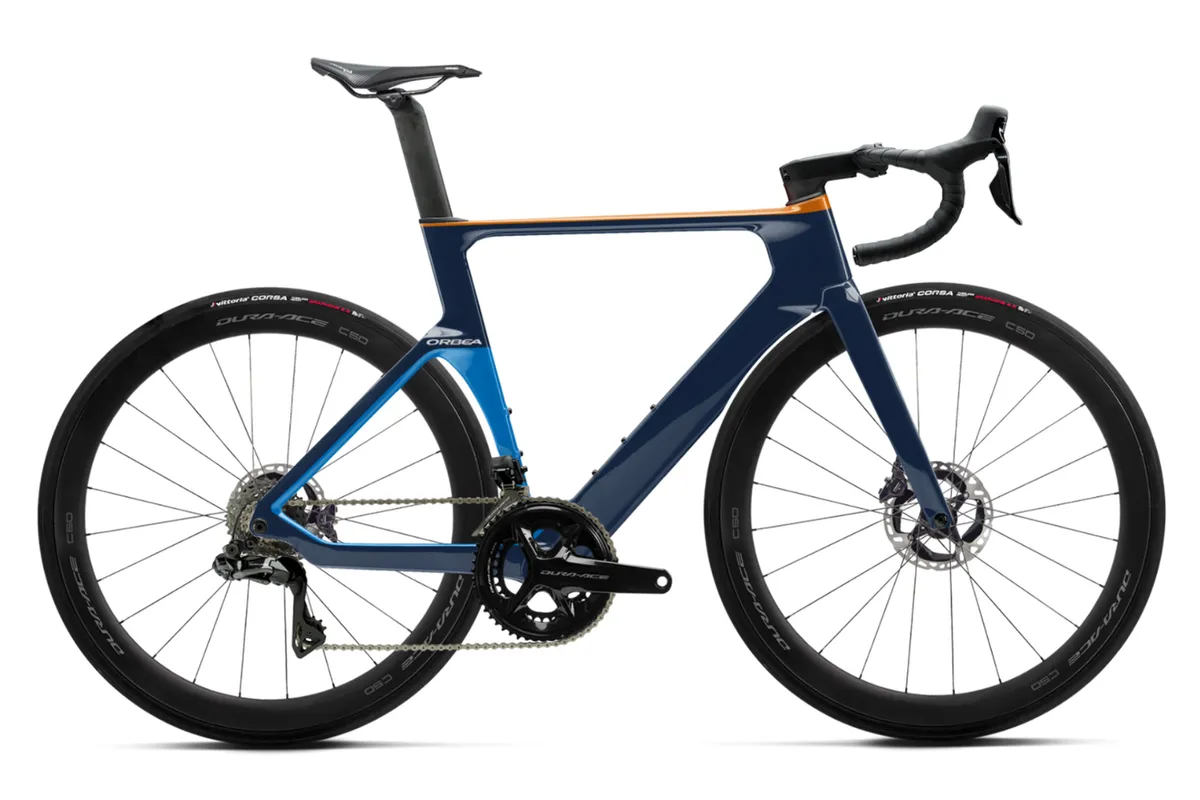
I think that would be about perfect for me, so, if anyone at Orbea headquarters is reading this and feeling exceptionally generous, don’t hesitate to get in touch.
Customisation like this is likely to increase the lead time for getting your bike delivered, but, incredibly, it doesn’t come at any extra cost (unless you opt for component upgrades along the way, of course).
Conclusion
All things considered, Orbea has done a fantastic job updating its dedicated aero road bike.
It has a well thought-out design, which expertly balances practicality and speed. With a level of adjustability similar to a standard road bike and customisation options galore, the Orca Aero is a bike I would genuinely love to own.
The aero bottle and a storage box may seem a little gimmicky at first glance, but the latter is genuinely useful even if the former was a slight miss for me. If you’re buying this bike with a view to doing time trials or triathlons, though, you might love the aero bottle more than I did.
I’ll accept the increased mass is likely to be a sticking point for some, especially at this price point, but the Orca Aero is a bike that doesn't feel heavy on the road, and physics suggests it doesn’t make much difference against the clock either.
Product
| Brand | orbea |
| Price | 9599.00 EUR,9599.00 GBP,9999.00 USD |
| Weight | 8.2500, KILOGRAM (57cm) - With aero bottle and downtube storage box |
Features
| Fork | Orbea Orca Aero |
| br_stem | Orbea ICR |
| br_chain | Shimano XTR M9100 / Dura-Ace chain 12-speed |
| br_frame | Orbea Orca Aero |
| Tyres | Vittoria Corsa Competition G2.0 TLR, 700x25c |
| br_brakes | Shimano Dura-Ace R9270 hydraulic disc |
| br_cranks | Shimano Dura-Ace R9200 |
| br_saddle | Prologo Dimension T4.0, Size 143mm |
| br_wheels | Shimano R9250 C50 Disc Carbon TL CL |
| br_shifter | Shimano Dura-Ace Di2 R9270 |
| br_cassette | Shimano Dura-Ace R9200 11-30T |
| br_seatpost | Orbea Orca Aero |
| br_handlebar | Orbea OC3 Aero road handlebar |
| br_bottomBracket | BB386EVO |
| br_availableSizes | 47cm, 49cm, 51cm, 53cm, 55cm, 57cm, 60cm |
| br_rearDerailleur | Shimano Dura-Ace Di2 R9200 |
| br_frontDerailleur | Shimano Dura-Ace Di2 R9200 |
